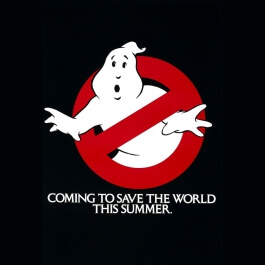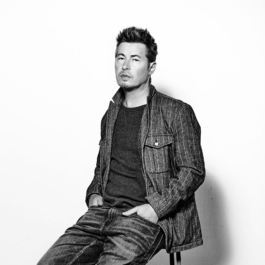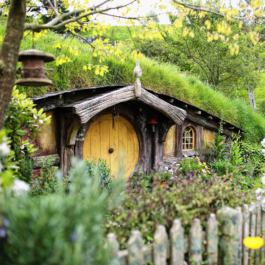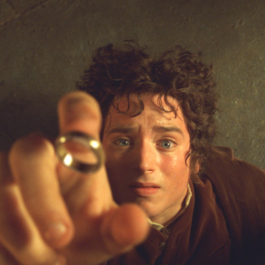Special The Graphic Novel
The Top 20 Most Powerful Graphic Novels Of All Time
Slide Nr 1There’s a very thin line between comics and graphic novels that many people fail to recognise: Unlike comic books, which can be seen as periodicals with successive storylines, graphic novels are usually (though not always) autonomous stories with more complex plots, and they tend to be less tightly tied to the superhero genre. Here, we highlight 20 influential graphic novels that don’t involve any of your favourite superheroes – but instead heroic everyday people like you and me.
0/20
Special The Graphic Novel
The Top 20 Most Powerful Graphic Novels Of All Time.
Slide Nr 2Onward Towards Our Noble Deaths (1973) – The 1973 publication of Onward Towards Our Noble Deaths by Shigeru Mizuki, one of Japan’s most important cartoonists of all time, was a landmark event. Combining almost painfully beautiful storytelling with stunningly drawn panels, this anti-war novel tells the tale of Japanese soldiers stuck on an island during WWII. This book desperately needs to be rediscovered by readers worldwide, especially any who would think that war is a solution to problems whose foundations lie in the buried truths about ourselves as humans and our histories as nations that we do not have the courage to face.
1/20
Special The Graphic Novel
The Top 20 Most Powerful Graphic Novels Of All Time.
Slide Nr 3A Contract With God (1978) – Will Eisner’s A Contract With God and Other Tenement Stories is widely considered to be the first Western graphic novel. Part fiction, part memoir, the book is a collection of 4 stories, each a snippet of Jewish-American life in New York during the Great Depression. The art and writing are of remarkable quality, even though some might find the stories’ themes to be somewhat depressing and dark.
2/20
Special The Graphic Novel
The Top 20 Most Powerful Graphic Novels Of All Time.
Slide Nr 4Maus: The Complete Maus (1980-1991) – Some might think that a graphic novel doesn’t seem like the right choice when dealing with something as tragic as the Holocaust, but the truth is that Maus isn’t your ordinary graphic novel: It’s the tough, brutal and honest story of a Jewish man and his wife living in Hitler’s Europe. Art Spiegelman’s idea to portray the Jews as mice and the Germans as cats, combined with the book’s simple but beautiful art, renders the story deeply intense and heartbreaking.
3/20
Special The Graphic Novel
The Top 20 Most Powerful Graphic Novels Of All Time.
Slide Nr 5V For Vendetta (1989) – A classic dystopian graphic novel, with echoes of Orwell’s 1984 but set in a not-so-futuristic fascist England, Alan Moore’s V For Vendetta inspired one of the most popular political thriller films of the past 20 years. The fact that the source material not only has millions of fans, but also its fair share of critics, proves the unwritten law that every true masterpiece will have haters, too. “Remember, remember the 5th of November . . .”
4/20
Special The Graphic Novel
The Top 20 Most Powerful Graphic Novels Of All Time.
Slide Nr 6The Sandman: Dream Country (1990) – The third volume of the Sandman collection is a series of 4 short graphic novel stories by another giant of the field, Neil Gaiman. Despite their short length, each story manages to be tight and charming, thanks to Gaiman’s evocative artwork. Thought-provoking and magical, the writer’s bizarrely wonderful imagination will make you question reality and reconsider the “alternate things” that could be out there.
5/20
Special The Graphic Novel
The Top 20 Most Powerful Graphic Novels Of All Time.
Slide Nr 7Buddy Does Seattle (1990-94) – This hysterical masterpiece is the first volume of Peter Bagge’s Hate series, which tells the story of “Buddy” Bradley and his friends in 1990s Seattle. Buddy is a young loser who dreams big, but doesn’t try too hard to pursue those dreams. His hilarious adventures with bad roommates, comic books and potential love interests will make you laugh out loud, while those who grew up in the ‘90s will definitely feel a strong dose of nostalgia.
6/20
Special The Graphic Novel
The Top 20 Most Powerful Graphic Novels Of All Time.
Slide Nr 8It’s a Good Life, If You Don’t Weaken (1996) – This semi-autobiographical graphic novel focuses on Seth’s search for the work of an obscure gag cartoonist known as Kalo, who once had a cartoon published in The New Yorker. His research takes him to a small town in rural Ontario, where he learns a lesson about what really matters in life. Expect gorgeous artwork by real-life Seth in a narrative weaving together the themes of nostalgia, alienation and artistic legacy.
7/20
Special The Graphic Novel
The Top 20 Most Powerful Graphic Novels Of All Time.
Slide Nr 9Ghost World (1997) – Ghost World isn’t just another graphic novel, but rather a cultural and generational touchstone that continues to inspire readers 20 years after its release. The book tells the story of two friends who have just finished high school and are stumbling in their transition from youth to adulthood. The art is wonderfully understated and perfectly matches the catchy writing of Daniel Clowes. The characters are enjoyably unlikable and cynical, and they will most likely remind you of people you used to know as a teenager.
8/20
Special The Graphic Novel
The Top 20 Most Powerful Graphic Novels Of All Time.
Slide Nr 10300 (1998) – Not many graphic novels have managed to popularise a forgotten historical event and at the same time become the source of inspiration for one of the biggest blockbuster movies of the decade. Frank Miller’s 88-page epic graphic novel has great artwork, and despite claims of “abusing” the historical facts of one of the most glorious last stands in war history – the battle of Thermopylae – it manages to tell the tale in an engaging way that no strictly factual history book could.
9/20
Special The Graphic Novel
The Top 20 Most Powerful Graphic Novels Of All Time.
Slide Nr 11From Hell (1999) – Several critics have described From Hell as one of the most deeply disturbing graphic novels you could ever read. In it, Alan Moore delivers a shocking new take on who Jack the Ripper might have been and what his true motives were. The characters make startling and horrific choices, the plot is captivating, and Moore brings his own “unique” ideas to the table, making From Hell a classic and unique read.
10/20
Special The Graphic Novel
The Top 20 Most Powerful Graphic Novels Of All Time.
Slide Nr 12Jimmy Corrigan: The Smartest Kid on Earth (2000) – Chris Ware’s graphic novel about an estranged father and son has its own base of hard-core fans worldwide, and this is in no way surprising. It’s not an easy or pleasant work to read; instead it goes from graphic novel to novel, from collage to optical illusion. It’s an undeniably confusing book, and can even get frustrating and irritating at times. However, there’s no doubt that Ware has done a magnificent job, employing remarkable attention to detail and masterful storytelling.
11/20
Special The Graphic Novel
The Top 20 Most Powerful Graphic Novels Of All Time.
Slide Nr 13Palestine (2001) – Palestine is the definition of a one-of-a-kind graphic novel, and that’s because its creator, Joe Sacco, is not an ordinary cartoonist, but an “action cartoonist” who travels to areas of political turmoil to make documentary comics. Heavily political and extremely detailed, Palestine managed to achieve widespread acceptance for the literary genre now known as “Comics Journalism” – which Sacco pretty much invented with this masterpiece.
12/20
Special The Graphic Novel
The Top 20 Most Powerful Graphic Novels Of All Time.
Slide Nr 14Blankets (2003) – Blankets tells a story – that reads almost like poetry – of love and self-discovery, family and parenting, beautifully describing the deep scars the smallest of brutalities can leave on a young person’s heart. Craig Thompson does a superb job of depicting these things in the form of a graphic novel, with art so touching and evocative, it can bring tears to even the most stoic reader’s eye.
13/20
Special The Graphic Novel
The Top 20 Most Powerful Graphic Novels Of All Time.
Slide Nr 15Y: The Last Man (2003) – Have you ever wondered what life on Earth would be like if all the men spontaneously died? This is the question Brian K. Vaughan attempts to answer in Y: The Last Man, in which a mysterious plague instantly kills everyone with a Y chromosome – except protagonist Yorick Brown. Vaughan transforms this terrifying sci-fi scenario into an epic graphic novel, thanks to his incredible artwork and unusually intelligent story.
14/20
Special The Graphic Novel
The Top 20 Most Powerful Graphic Novels Of All Time.
Slide Nr 16Black Hole (2005) – Dark, nostalgic, and creepy, Black Hole is set in suburban Seattle in the 1970s and focuses on various high school students, with Charles Burns’s top-notch writing, characterisation and artwork perfectly capturing what it’s like to be a teenager. Dealing with all the fears, insecurities, triumphs and tragedies that seem so exaggeratedly important in a teen’s mind, things get even more horrific due to an epidemic of a sexually transmitted disease that ultimately deforms the teenagers to varying extents, with no available cure.
15/20
Special The Graphic Novel
The Top 20 Most Powerful Graphic Novels Of All Time.
Slide Nr 17Stitches: A Memoir (2009) – Stitches is David Small’s memoir of his dreadful childhood with parents who believed that silence was the best way to raise a child. It’s not an easy read as the protagonist’s life wasn’t pleasant at all. The atmospheric grey-ink washes, strong voice and moody drawing style will probably make you sad, but also hopeful in the end, as Small grows up to change things, going down a different path than his parents had gone with him.
16/20
Special The Graphic Novel
The Top 20 Most Powerful Graphic Novels Of All Time.
Slide Nr 18Asterios Polyp (2009) – If you think that graphic novels focus only on youngsters with troubled or intense childhoods, David Mazzucchelli’s classic – named after its protagonist – will change your mind. Asterios is a successful middle-aged architect and teacher whose whole life is completely upended when his New York City apartment goes up in flames. This amazing graphic novel fuses different artistic styles that no matter how showy, always advances the narrative.
17/20
Special The Graphic Novel
The Top 20 Most Powerful Graphic Novels Of All Time.
Slide Nr 19The Underwater Welder (2012) – Damon Lindelof, co-creator of the TV series Lost, has described the story of this graphic novel as “the most spectacular episode of The Twilight Zone that was never produced” – and that’s not an exaggeration. Written and illustrated by Jeff Lemire, The Underwater Welder follows Jack Joseph, a welder on an oil rig off the coast of Nova Scotia who specialises in diving. He and his wife, Susan, are expecting a child, but Jack is haunted by the death of his father when he was young. Are you willing to take a dive with him?
18/20
Special The Graphic Novel
The Top 20 Most Powerful Graphic Novels Of All Time.
Slide Nr 20The Sculptor (2015) – Think graphic novels can’t make you cry? This one might change your mind. Scott McCloud’s The Sculptor is a weighty read, and definitely one of the best graphic novels of the 21st century. Despite the simple, monochromatic illustrations, the pages are vivid and truly beautiful, blending perfectly with the story of a young, desperate and narcissistic sculptor who tries hard to leave his mark with his art.
19/20
Special The Graphic Novel
The Top 20 Most Powerful Graphic Novels Of All Time.
Slide Nr 21Honor Girl (2015) – Honor Girl is a memoir by Maggie Thrash, recounting her time at summer camp where she discovered she was attracted to other women. She falls for her counselor, Erin, who also feels the same way – though nothing ever happens between them. Thrash beautifully narrates her journey through sexual self-discovery, while the coloured pencil artwork and watercolour backgrounds are evocative of a high school art project, perfectly expressing a teenager’s mental and emotional life.
20/20















Sorry, the comment form is closed at this time.